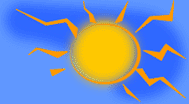|
 |
||||||||||
|
Hydrodynamics is the science of how things move in water.
|
|||||||||||
|
The
hydrodynamics of a surfboard are very important and also very complicated. There
are many variables on a surfboard that affect speed, stability and maneuverability.
These variables include friction, form, and fins. Friction,
or drag, has a large impact on speed. Even the slightest roughness such as scabs
of wax on the bottom of the board can make the difference in avoiding a wipe out. These
small imperfections cause enough friction with the water that a turbulent flow results, decreasing speed.
Several
characteristics come into play when form is considered, such as rocker and rail shape.
The rocker (curve on the bottom of the board) needs to be just right for the board to plane ideally. Too much rocker will cause the board to drag decreasing speed. Too
little rocker will leave the tip of the board prone to catching, resulting in a head first wipeout. Rail shape affects the lift (pressure distribution on the water) of the board which allows for hydroplaning. Tail shape also affects speed. A v-shaped
tail reduces the friction that results from the turbulence of the board moving across the water. The
hydrodynamics of fins gets very complicated. Simply put, the fins apply the torque
applied by the rider to the water allowing the board to turn. The fins act as
a lever. There is an optimum point where maximum speed and maximum maneuverability
are obtained. Surfboards
are almost always hand shaped. There is a great deal of knowledge and skill required
to build a fast yet maneuverable board. Surfing experience and science play an
equal role in this process. The following diagram shows how complicated the analysis of water flow around the board
becomes (from Surfboard Hydrodynamics Part 1: Drag by Terry Hendricks Ph.D.)
|
|||||||||||
 |
|||||||||||
